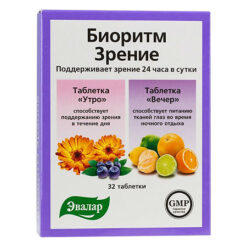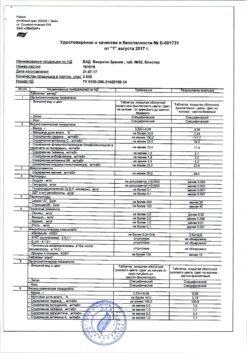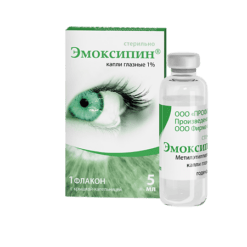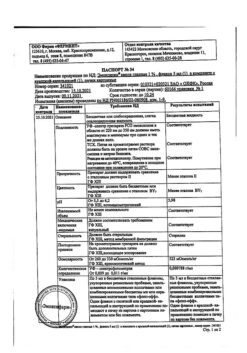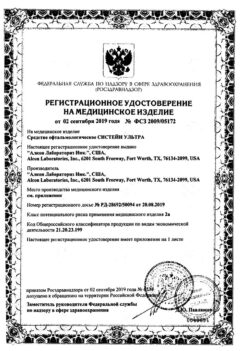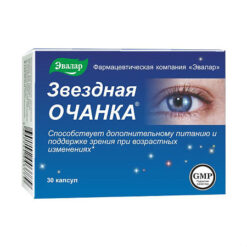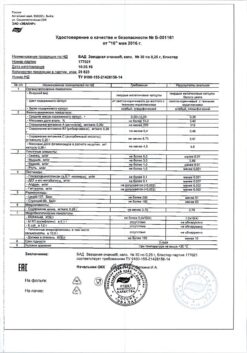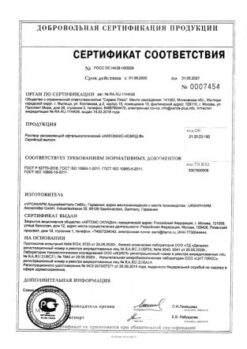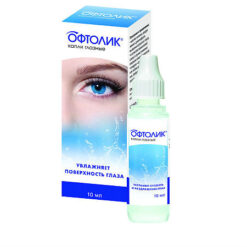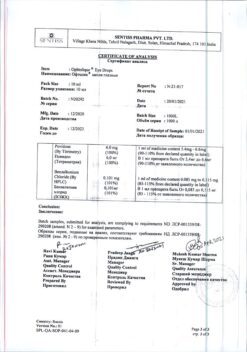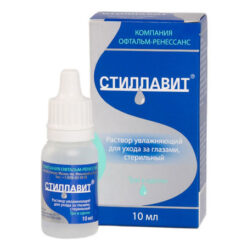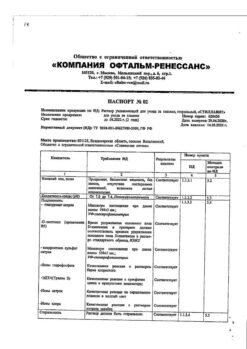No products in the cart.
Oloridin, eye drops 0.1% 5 ml
€1.00
Out of stock
(E-mail when Stock is available)
Description
Pharmacotherapeutic group: Antiallergic agent – H1-histamine receptor blocker.
ATC code: S01GX09
Pharmacological properties
Pharmacodynamics
Indications
Indications
Active ingredient
Active ingredient
How to take, the dosage
How to take, the dosage
Topically.
Push 1 drop of the solution into the conjunctival sac of the affected eye twice a day (8 hours apart).
The treatment duration is up to four months.
If necessary, the drug can be used in combination with other drugs. In this case, the interval between their application should be at least 5 minutes.
Elderly people
There is no need to adjust doses for elderly patients.
Children 3 years and older
The drug can be used in the same doses as in adults.
Renal or hepatic impairment
There have been no studies in patients with renal or hepatic impairment regarding the administration of olopatadine in the form of eye drops. However, no dose adjustments are expected to be necessary in patients with renal or hepatic impairment.
Interaction
Interaction
Studies of interaction of olopatadine with other medicinal products have not been conducted.
In in vitro studies it was demonstrated no inhibition of metabolic reactions mediated by cytochrome Ð 450 isoenzymes 1A2, 2С8, 2С9, 2С19, 2D6, 2Ð1 and 3Ð4. According to the results obtained, the probability of entering into metabolic reactions of olopatadine when co-administered with other drugs is estimated to be low.
Special Instructions
Special Instructions
Olopatadine hydrochloride is an anti-allergic/antihistamine drug for topical use in ophthalmology, and despite local use, it may be absorbed into the systemic bloodstream. In case of pronounced hypersensitivity reactions the drug should be discontinued. The drug contains benzalkonium chloride, which may cause eye irritation and discoloration of soft contact lenses. Contact of the drug with soft contact lenses should be avoided. Patients should be instructed to remove their contact lenses before using the product and put them back on not earlier than 15 min after injecting.
Benzalkonium chloride may cause keratitis pitting or toxic ulcerative keratopathy if patients have dry eye or corneal pathology with frequent or prolonged use.
Synopsis
Synopsis
Contraindications
Contraindications
Hypersensitivity to the components of the drug, pregnancy and breastfeeding, age less than 3 years.
With caution
In patients with concomitant dry eye syndrome and corneal diseases.
Side effects
Side effects
General information on the profile of adverse events
In clinical trials involving 1680 patients the dosing regimen was 1 to 4 drops per day, the duration of therapy was up to 4 months, and olopatadine was used both in monotherapy and together with loratadine in a dose of 10 mg. The overall incidence of adverse events was about 4.5%, while only 1.6% of cases were reported of clinical trial termination due to adverse reactions. No adverse events have been reported in the clinical trials, either in the visual organ or in the body as a whole. The most frequent adverse reaction associated with the treatment was discomfort in the eye, this phenomenon was noted in 0.7% of patients.
Table data on adverse events
System-organ class
Frequency of occurrence
Undesirable phenomena
Immune system disorders
Frequency unknown
Hypersensitivity to drug components, facial swelling
Frequency unknown
Eye pain, eye irritation, dry eye syndrome, unusual sensation in the eye
Corneal erosion, corneal epithelial defect, pitting keratitis, keratitis, accumulation of dye pigment in area of corneal defect in diagnostic tests, ocular discharge, photophobia, blurred vision, decreased visual acuity, blepharospasm, discomfort in the eye, itching in the eye, conjunctival folliculosis, conjunctival disorders, feeling of a foreign body in the eye, lacrimation, erythema of the eyelids, eyelid edema, eyelid disorders, conjunctival injection/p>
Corneal edema, conjunctival edema, conjunctivitis, mydriasis, visual impairment, crusts on the edges of the eyelids
Respiratory, thoracic and mediastinal disorders
Frequent unknown
Dry mouth Dyspnea, sinusitis
Gastrointestinal tract disorders
Frequency unknown
Nausea, vomiting
Skin and subcutaneous fatty system disorders
Infrequent
Frequency unknown
Contact dermatitis, burning sensation of the skin, dry skin
/p>
Dermatitis, erythema
General disorders
Frequent Unknown
Increased fatigue Asthenia, feelings of malaise
Overdose
Overdose
Pregnancy use
Pregnancy use
Fertility
There have been no studies on the effect of topical use of Olopatadine in ophthalmology on human fertility.
Pregnancy
There are no or limited data on topical use of olopatadine in ophthalmology in pregnant women. Animal studies have reported toxic effects of olopatadine on reproductive function when used systemically. The use of olopatadine during pregnancy and women of childbearing age who do not use contraception is not recommended.
Breastfeeding
Similarities
Similarities
Additional information
| Shelf life | 3 years. After opening the bottle – 1 month. Do not use after the expiration date! |
|---|---|
| Conditions of storage | Temperature should not exceed 30 °С. Keep out of the reach of children. |
| Manufacturer | Grotex Ltd, Russia |
| Medication form | eye drops |
| Brand | Grotex Ltd |
Related products
Buy Oloridin, eye drops 0.1% 5 ml with delivery to USA, UK, Europe and over 120 other countries.


